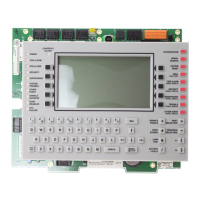NFS2-3030/E Installation Manual — P/N 52544:N1 07/18/2014 43
Section 4: Applications
4.1 Overview
A listing of chapters and topics covered in this section:
Municipal Box (Auxiliary)
Municipal Box applications require a TM-4 Transmitter module. Refer to the Transmitter Module
TM-4 installation document for installation details.
4.2 Devices Requiring External Power Supervision
With LCM-320 revision 2.0 and higher, certain type codes have external power supervision
(FlashScan only) built into the software. An external power-supervision relay is required (see
Figure 4.1) unless one of the following typecodes is selected for the device:
Figure 4.1 Enabling External Power Supervision Using Relays
Chapter Covers the following topics
Section 4.3 “NFPA 72 Central or
Remote Station Fire Alarm System
(Protected Premises Unit)”
How to install a UDACT/UDACT-2 with the CPU for use as a NFPA
Central or Remote Station Fire Alarm System (Protected Premises
Unit)
Section 4.4 “NFPA 72 Proprietary
Fire Alarm Systems”
How to set up a Protected Premises Unit to communicate with a listed
compatible Protected Premises Receiving Unit.
Section 4.5 “Fire/Security
Applications”
How to use the CPU as a combination Fire/Security system, including
the following:
• Installing a Security Tamper Switch into the cabinet
• Circuit Wiring
NOTE: NFS2-3030 is not listed for Canadian security application.
• Control
• Strobe
•Horn
•(Blank)
• Release Ckt
• Rel Ckt Ulc
• Nonreset Ctl
•Alarms Pend
• Gen Alarm
• Gen Super
• Gen Trouble
• Gen Pend
•Trouble Pend
Device to be
Supervised
Non-resettable 24
VDC Power from
a listed source
–
+
–
+
SLC from FACP or
LCM/LEM
FCM-1
N.C. Supervision
Relay Contact
Part of EOLR-1
(Not required for
FlashScan type codes
that provide built-in
power supervision.)
Power Supervision Relay
(EOLR-1)
(Not required for FlashScan
type codes that provide
built-in power supervision.)
3030-external-power-suptpH.wmf
*If the SLC device does
not match the one in this
figure, refer to the SLC
manual appendix, which
contains wiring conversion
charts for type V and type
H modules.

